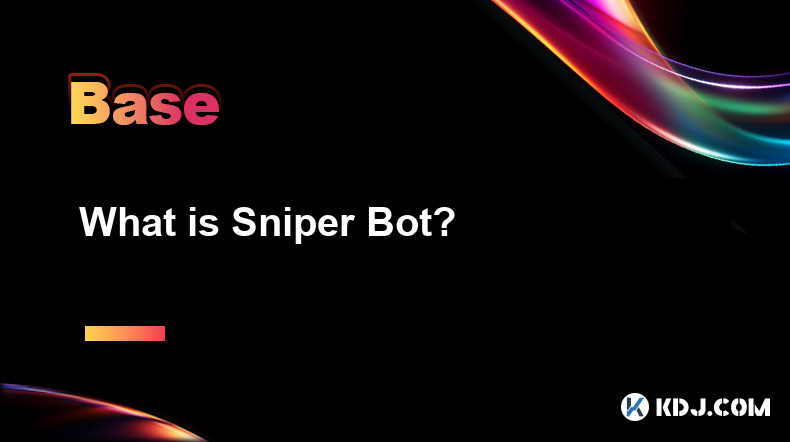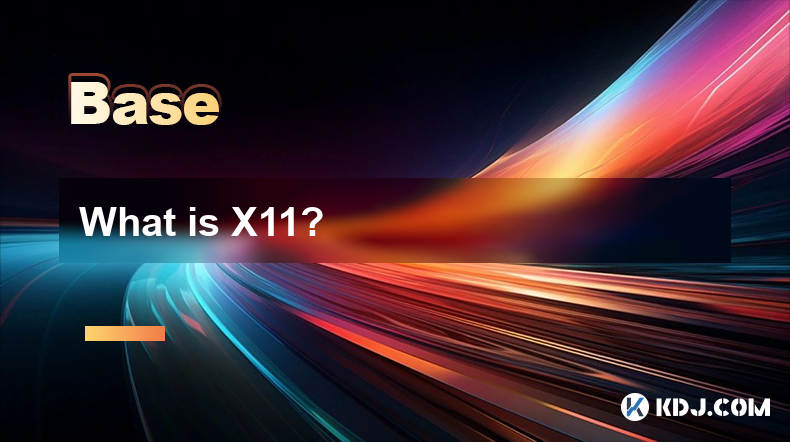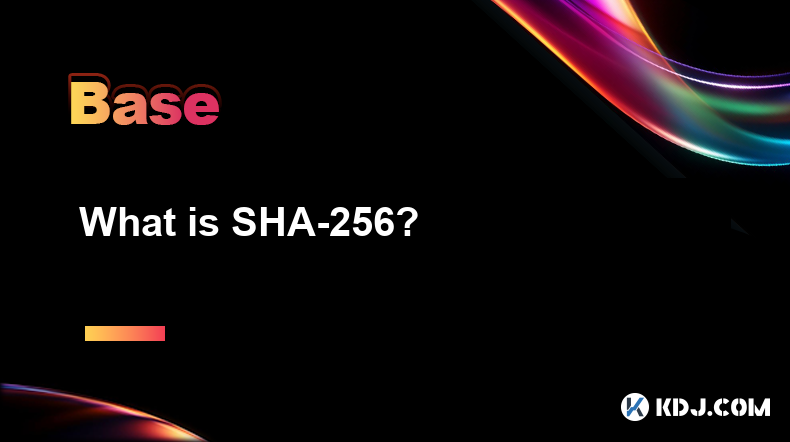-
 Bitcoin
Bitcoin $78,376.0795
-4.77% -
 Ethereum
Ethereum $1,548.8063
-11.55% -
 Tether USDt
Tether USDt $0.9994
-0.02% -
 XRP
XRP $1.8818
-9.04% -
 BNB
BNB $551.7480
-4.69% -
 USDC
USDC $1.0000
0.01% -
 Solana
Solana $106.1095
-7.66% -
 Dogecoin
Dogecoin $0.1468
-8.95% -
 TRON
TRON $0.2275
-4.95% -
 Cardano
Cardano $0.5707
-8.85% -
 UNUS SED LEO
UNUS SED LEO $8.9335
-1.49% -
 Toncoin
Toncoin $3.0253
-8.20% -
 Chainlink
Chainlink $11.2802
-7.86% -
 Stellar
Stellar $0.2302
-8.79% -
 Avalanche
Avalanche $16.4569
-4.24% -
 Shiba Inu
Shiba Inu $0.0...01128
-5.14% -
 Sui
Sui $2.0097
-2.68% -
 Hedera
Hedera $0.1463
-4.76% -
 MANTRA
MANTRA $6.2909
1.82% -
 Polkadot
Polkadot $3.5783
-7.89% -
 Bitcoin Cash
Bitcoin Cash $271.3725
-8.06% -
 Dai
Dai $1.0000
0.00% -
 Litecoin
Litecoin $70.0284
-11.01% -
 Ethena USDe
Ethena USDe $0.9986
-0.03% -
 Bitget Token
Bitget Token $4.0832
-5.49% -
 Pi
Pi $0.5780
-5.55% -
 Monero
Monero $201.8656
-4.22% -
 Hyperliquid
Hyperliquid $10.9226
-3.72% -
 Uniswap
Uniswap $5.1124
-8.67% -
 OKB
OKB $51.1549
-4.68%
What is Vyper and its characteristics?
Vyper, designed for Ethereum, enhances smart contract security and readability, focusing on simplicity and efficiency for developers creating DApps.
Apr 07, 2025 at 08:35 pm

Vyper is a programming language specifically designed for the Ethereum blockchain, aimed at enhancing the security and readability of smart contracts. Developed by the Ethereum community, Vyper focuses on simplicity and safety, making it an attractive choice for developers who want to create secure and efficient decentralized applications (DApps). In this article, we will explore the key characteristics of Vyper, its advantages, and how it compares to other smart contract languages like Solidity.
Security-Focused Design
One of the primary goals of Vyper is to minimize the risk of common programming errors that can lead to security vulnerabilities. Vyper achieves this by implementing a strict subset of Python 3, which excludes features that are often sources of bugs in smart contracts. For instance, Vyper does not support class inheritance, inline assembly, and function overloading, which are known to complicate code and increase the likelihood of errors.
Vyper also enforces explicit type conversions, ensuring that developers must be clear about the data types they are working with. This reduces the chance of unintended type mismatches that could lead to security issues. Additionally, Vyper includes built-in checks for common pitfalls such as integer overflows and underflows, further enhancing the security of the contracts written in this language.
Readability and Simplicity
Vyper places a strong emphasis on code readability, which is crucial for maintaining and auditing smart contracts. The syntax of Vyper is designed to be as clear and concise as possible, making it easier for developers to understand and review the code. This focus on readability not only helps in reducing errors but also makes it easier for new developers to learn and use Vyper.
The language's simplicity is also reflected in its minimalistic approach to features. By limiting the number of language constructs, Vyper ensures that developers have fewer things to learn and fewer ways to make mistakes. This approach aligns with the principle of "less is more," which is particularly beneficial in the context of smart contracts where security is paramount.
Performance and Gas Efficiency
While security and readability are at the forefront of Vyper's design, the language also aims to be efficient in terms of gas usage on the Ethereum network. Vyper's compiler is optimized to generate bytecode that is both compact and efficient, which can lead to lower gas costs for executing smart contracts. This is particularly important for developers who are looking to minimize the operational costs of their DApps.
Vyper's focus on performance is also evident in its support for advanced features like decorators, which can be used to optimize certain operations within the contract. These features allow developers to write more efficient code without compromising on the language's security and readability goals.
Comparison with Solidity
Solidity is currently the most widely used language for writing smart contracts on the Ethereum blockchain. While both Vyper and Solidity share the goal of enabling developers to create smart contracts, there are significant differences between the two languages. Vyper's design philosophy is centered around security and simplicity, whereas Solidity offers more flexibility and a broader set of features.
One of the key differences is that Vyper does not support class inheritance, which is a feature available in Solidity. This design choice in Vyper is intended to reduce complexity and potential security risks. On the other hand, Solidity's support for inheritance can be useful for creating more complex and modular smart contracts, but it also increases the risk of errors if not managed carefully.
Another notable difference is that Vyper enforces stricter type safety rules compared to Solidity. This means that developers using Vyper must be more explicit about the types of data they are working with, which can help prevent type-related errors. Solidity, while also supporting type safety, allows for more implicit type conversions, which can sometimes lead to unintended behavior.
Community and Ecosystem
The Vyper community is actively involved in the development and improvement of the language. Regular updates and enhancements are made to Vyper based on feedback from developers and security experts. This collaborative approach helps ensure that Vyper remains a secure and reliable choice for writing smart contracts.
The ecosystem around Vyper includes various tools and resources that support developers in their work. Integrated development environments (IDEs) and testing frameworks are available to help developers write, test, and deploy Vyper smart contracts. Additionally, there are online communities and forums where developers can share knowledge, ask questions, and collaborate on projects.
Use Cases and Adoption
Vyper has been adopted by several projects within the Ethereum ecosystem, particularly those that prioritize security and simplicity. Decentralized finance (DeFi) projects are among the most common use cases for Vyper, given the critical importance of security in financial applications. By using Vyper, these projects can benefit from the language's security-focused design and efficient gas usage.
Other use cases include governance and voting systems, where the clarity and simplicity of Vyper's code can help ensure the integrity of the voting process. Additionally, Vyper is used in various other types of DApps that require robust and secure smart contracts.
Getting Started with Vyper
For developers interested in using Vyper, getting started is relatively straightforward. Here are the steps to begin writing smart contracts in Vyper:
Install the Vyper compiler: The first step is to install the Vyper compiler on your local machine. This can be done using pip, the Python package manager. Simply run the command
pip install vyperin your terminal.Set up a development environment: Choose an IDE that supports Vyper, such as Visual Studio Code with the Vyper extension. This will provide syntax highlighting and other development tools to help you write and debug your code.
Write your first Vyper contract: Start by creating a new file with a
.vyextension. You can begin with a simple contract to get familiar with the syntax. For example:
# @version ^0.3.7owner: public(address)
@external
def __init__():
self.owner = msg.sender
@external
@view
def get_owner() -> address:
return self.owner
Compile and deploy the contract: Use the Vyper compiler to compile your contract into bytecode. You can then deploy the contract to the Ethereum network using tools like Truffle or Remix.
Test and iterate: Write tests for your contract using a testing framework like pytest-vyper. Iterate on your code based on the test results and any feedback you receive from the community.
By following these steps, developers can start building secure and efficient smart contracts using Vyper.
Frequently Asked Questions
Q: Can Vyper be used for all types of smart contracts, or is it better suited for specific use cases?
A: Vyper is designed to be versatile and can be used for various types of smart contracts. However, it is particularly well-suited for applications where security and simplicity are critical, such as decentralized finance (DeFi) and governance systems. Its focus on minimizing common programming errors makes it an excellent choice for projects that require robust and secure smart contracts.
Q: How does Vyper handle upgrades and maintenance of smart contracts?
A: Vyper supports the use of proxy contracts, which allow for the upgradeability of smart contracts. Developers can deploy a proxy contract that points to the implementation contract written in Vyper. By updating the implementation contract, developers can upgrade the functionality of the smart contract without changing its address on the blockchain.
Q: Are there any known limitations or challenges when using Vyper?
A: While Vyper offers many advantages, it also has some limitations. One challenge is its smaller feature set compared to Solidity, which can make it less suitable for very complex smart contracts that require advanced language constructs. Additionally, the Vyper ecosystem is still growing, so developers may find fewer resources and tools available compared to more established languages like Solidity.
Q: How does Vyper ensure the security of smart contracts during the development process?
A: Vyper ensures security through several mechanisms during the development process. It enforces strict type safety, includes built-in checks for common errors like integer overflows, and excludes potentially dangerous language features. Additionally, the Vyper community regularly audits and updates the language to address any newly discovered vulnerabilities, ensuring that developers have access to the most secure tools and practices.
Disclaimer:info@kdj.com
The information provided is not trading advice. kdj.com does not assume any responsibility for any investments made based on the information provided in this article. Cryptocurrencies are highly volatile and it is highly recommended that you invest with caution after thorough research!
If you believe that the content used on this website infringes your copyright, please contact us immediately (info@kdj.com) and we will delete it promptly.
- As clouds gathered over the crypto landscape, a flash tore through the sky: Ethereum, an essential pillar, lost 14% of its value in 24 hours
- 2025-04-08 01:15:11
- The scandal related to ZKasino, a blockchain-based gambling platform, continues to widen
- 2025-04-08 01:15:11
- As We Approach May 2025, Dogecoin (DOGE) Investors Are Facing Uncertainty
- 2025-04-08 01:10:12
- Cryptocurrency markets plunged sharply early Monday, wiping billions from the total market capitalization
- 2025-04-08 01:10:12
- Dogecoin (DOGE) Price Surge Incoming? Analysts Point to Historical Patterns
- 2025-04-08 01:05:12
- Mutuum Finance (MUTM) Token Identified by Algorithms to Deliver Exponential Upside Before 2025
- 2025-04-08 01:05:12
Related knowledge

What is Sniper Bot?
Apr 07,2025 at 10:43pm
A Sniper Bot is a type of automated trading software used within the cryptocurrency market to execute trades at optimal times, often milliseconds before other traders. These bots are designed to take advantage of new token listings, price fluctuations, and other market opportunities to buy or sell assets quickly and efficiently. The primary goal of a Sn...

What is Mining Rig?
Apr 07,2025 at 11:08pm
A mining rig is a specialized computer system designed specifically for the purpose of mining cryptocurrencies. Mining, in the context of cryptocurrencies, refers to the process of solving complex mathematical problems to validate transactions and add them to the blockchain. This process requires significant computational power, and a mining rig is buil...

What is X11?
Apr 07,2025 at 09:22pm
What is X11? X11 is a cryptographic hash function used in various cryptocurrencies, most notably in the Dash cryptocurrency. It is designed to provide a high level of security and efficiency, making it a popular choice for blockchain networks. The X11 algorithm is unique because it uses a chain of 11 different hashing algorithms, which enhances its secu...

What is SHA-256?
Apr 07,2025 at 11:15pm
What is SHA-256?SHA-256, or Secure Hash Algorithm 256-bit, is a cryptographic hash function that is part of the SHA-2 family of hash functions. It is widely used in the cryptocurrency world, particularly in Bitcoin and other blockchain technologies, for securing data and ensuring the integrity of transactions. This article will delve into the specifics ...

What is an elliptic curve?
Apr 08,2025 at 01:21am
An elliptic curve is a fundamental concept in mathematics that has found significant applications in the field of cryptography, particularly within the cryptocurrency sector. In the context of cryptocurrencies, elliptic curves are used to create secure cryptographic systems that underpin the security of transactions and the generation of digital signatu...

What is WASM compatibility?
Apr 07,2025 at 09:08pm
What is WASM Compatibility? WASM, or WebAssembly, is a binary instruction format for a stack-based virtual machine. It is designed to be a portable compilation target for programming languages, enabling deployment on the web for client and server applications. In the context of cryptocurrencies and blockchain technology, WASM compatibility refers to the...

What is Sniper Bot?
Apr 07,2025 at 10:43pm
A Sniper Bot is a type of automated trading software used within the cryptocurrency market to execute trades at optimal times, often milliseconds before other traders. These bots are designed to take advantage of new token listings, price fluctuations, and other market opportunities to buy or sell assets quickly and efficiently. The primary goal of a Sn...

What is Mining Rig?
Apr 07,2025 at 11:08pm
A mining rig is a specialized computer system designed specifically for the purpose of mining cryptocurrencies. Mining, in the context of cryptocurrencies, refers to the process of solving complex mathematical problems to validate transactions and add them to the blockchain. This process requires significant computational power, and a mining rig is buil...

What is X11?
Apr 07,2025 at 09:22pm
What is X11? X11 is a cryptographic hash function used in various cryptocurrencies, most notably in the Dash cryptocurrency. It is designed to provide a high level of security and efficiency, making it a popular choice for blockchain networks. The X11 algorithm is unique because it uses a chain of 11 different hashing algorithms, which enhances its secu...

What is SHA-256?
Apr 07,2025 at 11:15pm
What is SHA-256?SHA-256, or Secure Hash Algorithm 256-bit, is a cryptographic hash function that is part of the SHA-2 family of hash functions. It is widely used in the cryptocurrency world, particularly in Bitcoin and other blockchain technologies, for securing data and ensuring the integrity of transactions. This article will delve into the specifics ...

What is an elliptic curve?
Apr 08,2025 at 01:21am
An elliptic curve is a fundamental concept in mathematics that has found significant applications in the field of cryptography, particularly within the cryptocurrency sector. In the context of cryptocurrencies, elliptic curves are used to create secure cryptographic systems that underpin the security of transactions and the generation of digital signatu...

What is WASM compatibility?
Apr 07,2025 at 09:08pm
What is WASM Compatibility? WASM, or WebAssembly, is a binary instruction format for a stack-based virtual machine. It is designed to be a portable compilation target for programming languages, enabling deployment on the web for client and server applications. In the context of cryptocurrencies and blockchain technology, WASM compatibility refers to the...
See all articles





















































































